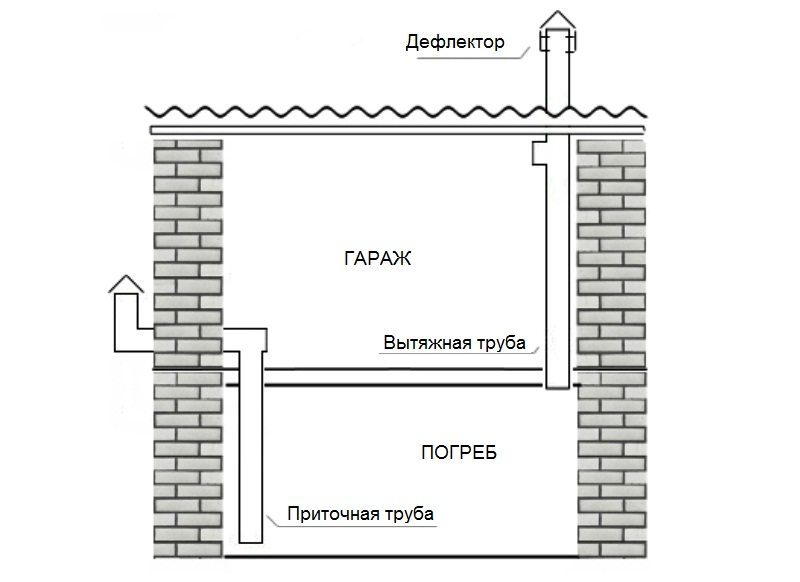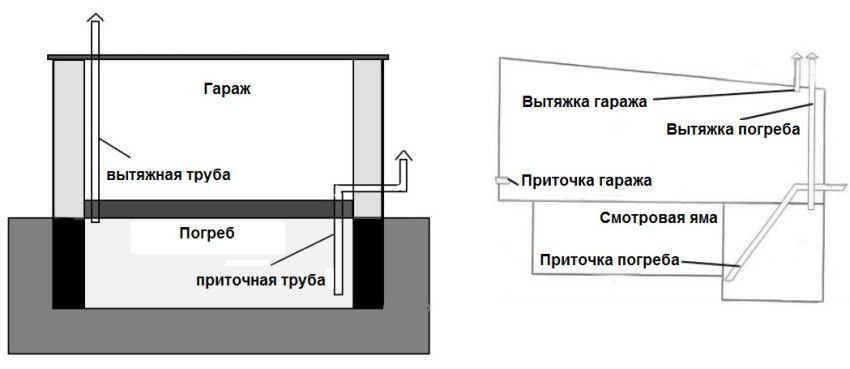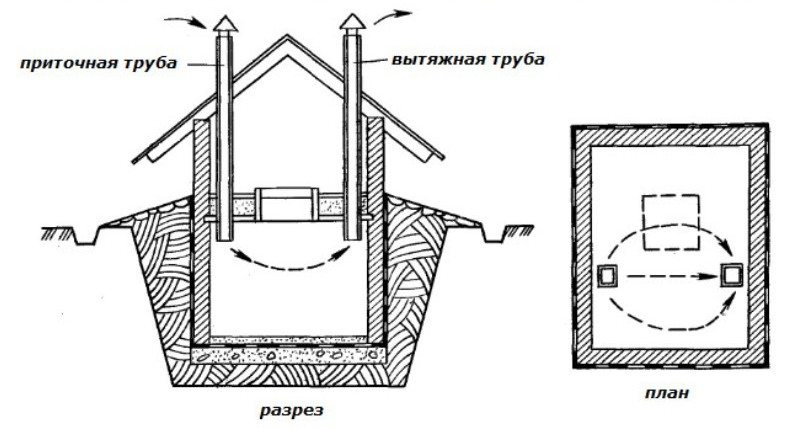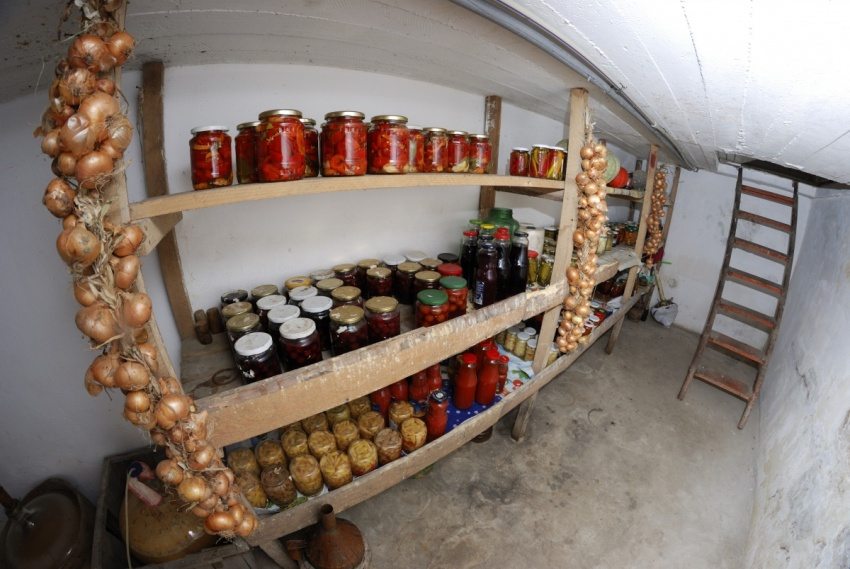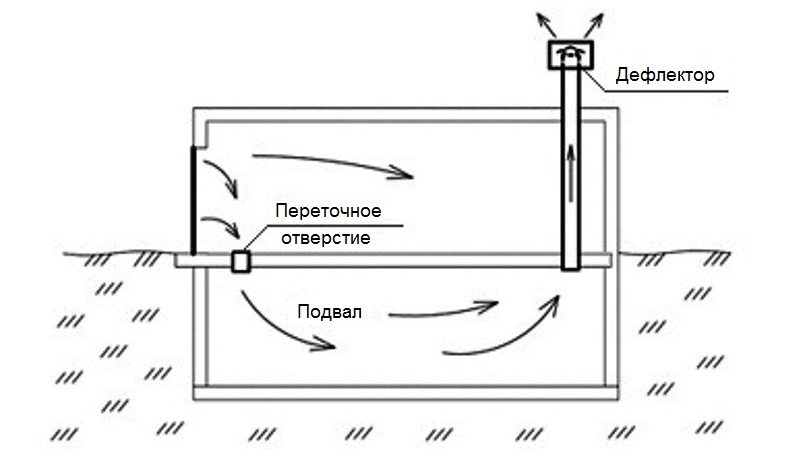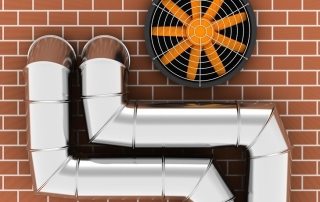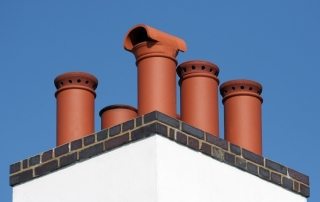Arrangement of high-quality ventilation in the cellar in the garage contributes to the formation of a healthy microclimate in the room. Proper air exchange allows you to store vegetables, fruits or canned food almost all year round. The constant change of air prevents the formation of dampness and, as a result, fungi and mold. Otherwise, the food will deteriorate rather quickly, and the resulting moisture can not only destroy the cellar over time, but also harm the car in the garage.
Content [Hide]
- 1 Selecting the type of ventilation
- 2 The choice of pipes for arranging ventilation
- 3 Arrangement of natural ventilation in the cellar in the garage
- 4 Forced ventilation
- 5 When is natural ventilation not enough?
- 6 Ventilation system control
- 7 Ventilation system installation: main stages
- 8 Ventilation in the cellar in the garage (video)
Selecting the type of ventilation
For a normal healthy microclimate in cellar there must be sufficient air flow. Its inflow can be provided in two ways:
- arrangement of natural ventilation;
- the creation of a forced draft mechanism.
Natural ventilation works on the principle of thermal convection. The drier air coming from the street sinks to the very bottom of the basement, and then, having warmed up, rises up, freeing up space for a new portion of fresh air.
Forced ventilation on the principle of arrangement is very similar to natural, but only when it is assembled, additional electrical mechanisms are used to facilitate faster air movement. The blowers used ensure a more efficient ventilation system.
The choice of pipes for arranging ventilation
As the basis of the entire ventilation system in the cellar in the garage, you can use pipes made of almost any material:
- metal;
- asbestos;
- plastic;
- from aluminum and others.
Other pipe options are also suitable, for example, made of cast iron, but their use is often impractical due to the higher cost. Usually air ducts with a diameter of 110 to 200 mm are used.
Useful advice! The pipe diameter is calculated as follows: for 1 square meter of area - 15-25 mm in diameter.
Both air ducts providing ventilation in the cellar in the garage must be equipped with dampers. Their task is to partially or completely block the movement of air. This may be required in cold weather.
Arrangement of natural ventilation in the cellar in the garage
This system consists of only two pipes. One of them is responsible for the supply of fresh, dry air, and the second for the removal of waste air by removing it outside. The most advantageous places for laying pipes are the opposite corners of the cellar.With such an arrangement, the likelihood of the formation of places in which the air will stagnate is significantly reduced.
The supply pipe should be lowered to approximately 0.4-0.5 m from the floor, while the exhaust pipe should be down to 1.5-2 m. The exhaust duct should be longer than 2.5 m in order to provide sufficient temperature difference to facilitate movement air. A special deflector is installed on its upper part, towering over the roof. It will perfectly protect the basement from dust and precipitation, and will also take care of a more efficient extraction.
Related article:
|
The supply part of the duct is positioned so that its upper part is about half a meter from the ground. A fine-mesh lattice is additionally installed on it, which will protect against the penetration of any living creatures into the cellar: rats, mice, cats.
Forced ventilation
The design of forced ventilation in the cellar in garage almost the same as with natural air exchange, only it is additionally equipped with fans powered by the network. That is why it is necessary to observe the basic rules of electrical safety, because condensate accumulated in the pipes can cause a short circuit. You need to purchase equipment that can work in wet conditions and be sure to perform high-quality waterproofing.
The fans can only be installed in one pipe. This is usually done in an exhaust duct. If you put a blower in the supply pipe, the ventilation efficiency in the cellar in the garage will be much higher. Another advantage of mechanical ventilation is the independence of the system from weather conditions. In any case, the room will quickly dry out and maintain the necessary humidity in it will not be difficult.
Supply ventilation can be organized not only with a fan. Can be used:
- Diffuser-vane. It is installed on the upper end of the supply duct. This design works due to wind energy.
- Low power light bulb - minion. It improves the quality of air exchange by heating the streams.
Useful advice! If the forced ventilation system in the cellar in the garage is equipped with two fans, then a more powerful one should be installed at the outlet, for example, two-speed.
It is also possible to create an automatic system that will work independently, with little or no external control. Such ventilation structures are equipped with special sensors that will independently turn on the supply and exhaust mechanisms when the air parameters change: humidity, temperature. Such systems also turn off independently when all indicators are normalized.
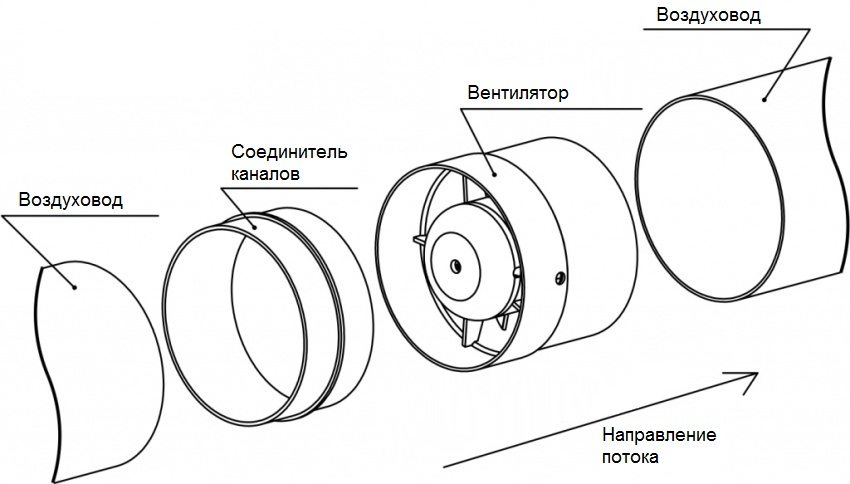
Assembly diagram duct fan
When is natural ventilation not enough?
An organized system of natural ventilation may not be enough in the following cases:
- Large cellar area (more than 40 m²). In this case, in the frosty season, the chimney can be completely covered with frost formed due to frozen condensate. As a result, air movement is significantly reduced and becomes insufficient to organize the correct microclimate. If a basement with such an area is divided into separate rooms and pipes are installed in each, then mechanical ventilation is not needed.
- Natural air exchange will not be enough if it is planned to equip a workshop or a mini-gym in the garage cellar. Only fans can supply enough oxygen.
- Air movement with blowers will be required if you plan to store a large amount of supplies. If vegetables are stored in the cellar, then the exhaust device will still fight against unpleasant odors.
Ventilation system control
The quality of ventilation in the cellar in the garage, as well as its performance, is recommended to be periodically checked. To do this, go down to the cellar and light a match. If the flame goes out quickly, then there is a large amount of carbon dioxide in the room, therefore, the air exchange is rather weak.
The ventilation system in the cellar in the garage requires periodic inspection and cleaning of accumulated dirt and debris. It periodically overgrows with cobwebs, layers of dust. The mechanical part of the structure also needs to be checked. For more efficient operation and control of the amount of incoming air, one supply channel is divided into two parts using a special partition. Thus, it is possible to normalize the volume of incoming air.
Holes are punched in the walls for fastening pipes, fasteners are installed. The duct sections are assembled on the floor, after which the finished structure is fixed in the prepared fixings. All joints must be sealed with special tape or sealant.
The process of arranging ventilation in the cellar in the garage, as you can see, is simple. The best option is considered to be a system created at the construction stage. But if there is none, then assembling the entire structure yourself will not be difficult.

